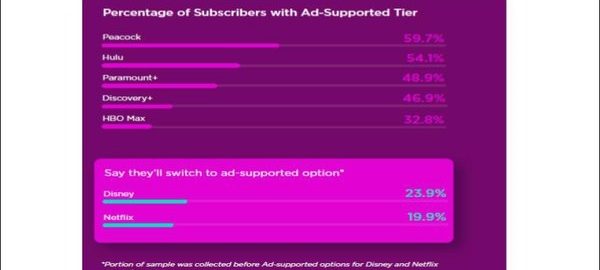Ad-Supported Streaming Adoption Up To 64%, Ad Tolerance Down
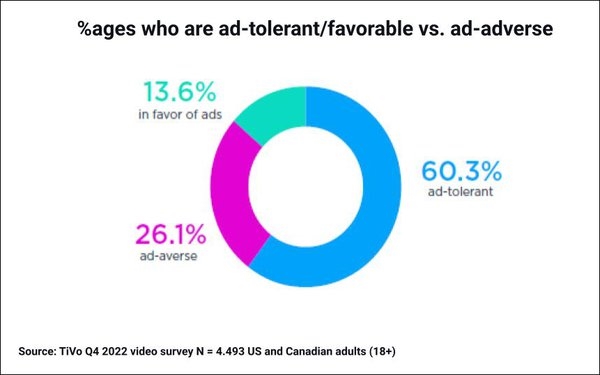
Yes, more and more consumers are signing up for ad-supported streaming services. But a bit of weariness with ads may already be creeping in.
TiVo’s Q4 2022 video report, based on a survey of 4,493 adults in the U.S. and Canada, found 63.5% saying they now watch one or more ad-supported video-on-demand (AVOD) or free, ad-supported streaming (FAST) services — up from 60.4% in Q4 2021.
At the same time, while 74% remain at least ad-tolerant (13.6% describing themselves as “in favor” of ads, 60.3% as “ad-tolerant”), that’s down 4% from Q4 2021 — suggesting, in TiVo’s words, that “despite cost advantages, the more people watch ads, the less they like them.”
Millennials — not their younger Gen Z counterparts — are the least ad-tolerant generation. Perhaps not surprising, given a 2019 Forbes study that found that 84% of Millennials don’t trust traditional advertising. Just half (50.9%) of Millennials now describe themselves as ad-tolerant, compared to 58.4% of Gen Z’s, 62.1% of Gen X’s, 68% of boomers, and 68.2% of those 77 and older.
Yet, Millennials — who, far from heedlessly pampering themselves are actually frugal, as a rule — reported the largest average number of ad-supported services, and the largest jump in those: up 83% versus a year ago, to 5.2. Gen Z’s — also more frugal than their elders tend to assume — are next, at 4.7 ad-supported services (up 57%), followed by Gen X’s, at 4.3 (up 76%).
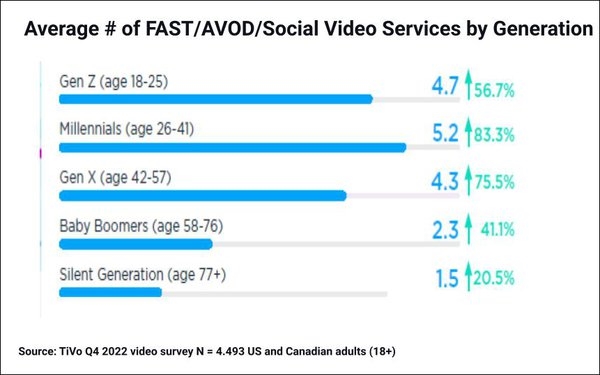
What may look like contradictory behavior on Millennials’ part is likely just a confirmation that they’re even more inclined than the rest of the population to conclude that, at least these days, saving money is more important than paying for an ad-free experience.
Two-thirds of all of TiVo’s respondents (66.4%) say they use ad-supported services because they’re free (well, FASTs are, anyway — though AVODs, as we know, are cheaper versions of ad-free SVOD services, but not free).
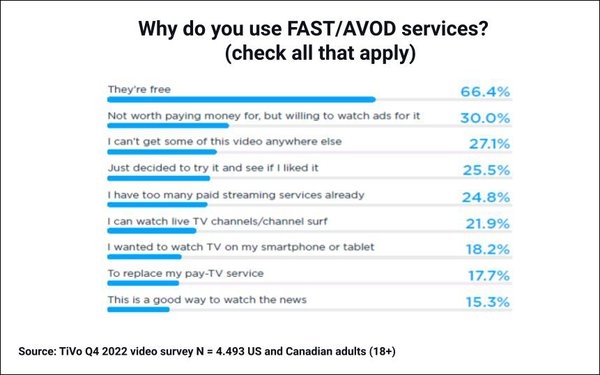
Tellingly, 30% say that FASTs’ content isn’t worth paying for, but they’re willing to watch ads to have access to it. Just like fewer and fewer are willing to pay cable and satellite fees to get the mostly ad-saturated programming available there, but growing numbers like getting traditional ad-supported linear free via antenna.
The reality is that while FASTs are certainly better for ad targeting, from the consumer’s experience perspective, they’re just traditional broadcast delivered via another technology. Actually, broadcast programming with a glitchier, considerably less sophisticated ad experience, in most cases. It’s probably lucky for streaming operators that so much of the current population never experienced pre-cable broadcast TV.
One upbeat indicator for advertisers is that the numbers of viewers reporting interacting with ads with QR codes, and tapping on interactive ads on mobile devices, continue to rise.
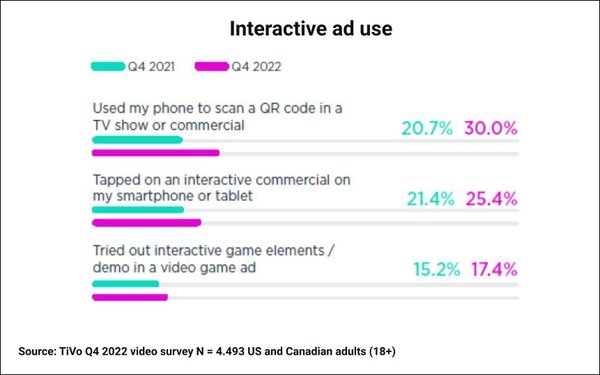
But in another heads-up for ad-supported services, 31.5% of all respondents reported that they typically only stick with even these free or cheap services for only three months — up from 24.3% saying the same a year ago.
Of course, as you’d assume, subscription-based services’ churn is also accelerating. While 34.4% say they have recently added an SVOD service, 26.6% say they’ve dropped one — up from 18.2% a year ago.
Just 38%, on average, say they keep an SVOD for more than a year. Further, a substantial 27% of Netflix subscribers say they’ve recently cancelled that service (up 7.7% versus Q4 2021) — although the self-reported cancellation rates for other services range from just 3.8% (Discovery+) to 9.1% (Hulu).
Overall, nearly 20% of respondents that use one of the SVODs with ad-supported tiers report opting for those cheaper tiers.
And with some of the services, like Peacock and Hulu, more than half report opting for the AVOD tiers. Roughly 20% also said they planned to switch to the new Netflix and Disney+ AVOD tiers.
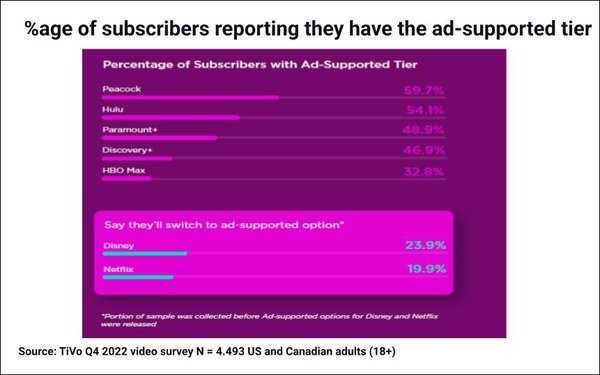
(15)
Report Post